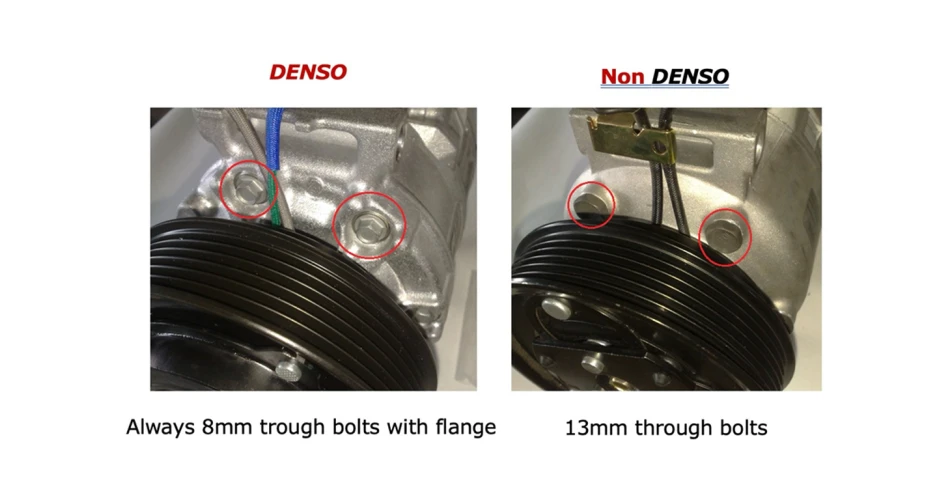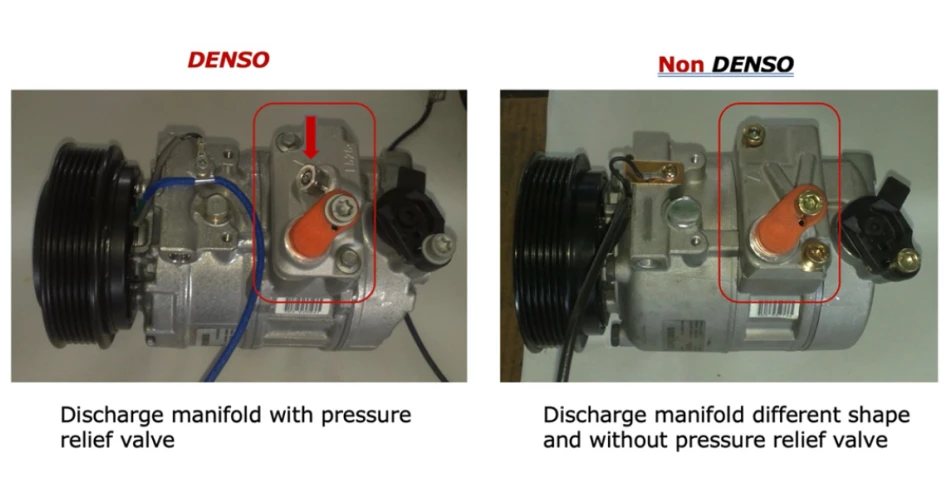Counterfeit products can be a particular problem with some vehicle components and can cause damage to the reputation of a garage. Parts and systems specialist DENSO has highlighted a particular issue that it has encountered with counterfeit versions of its air compressors.
DENSO is highlighting several of the features that technicians need to be aware of to ensure they are fitting a genuine DENSO replacement. DENSO stresses that although counterfeits might be supplied in traditional DENSO blue boxes, that is where most of the similarities to the genuine products ended.
One of the most obvious signs that the component could be counterfeit, is a lack of consistency when it comes to the fixings used on the unit. Using one example to make the case, the pictures show how the genuine DENSO compressor relies upon 8mm hexagonal flanged bolts for its assembly, whereas the counterfeit product uses a variety of different fixings, hexagonal and Allen bolts, neither with flanges.
DENSO compressors also usually use Torx bolts for securing the inlet and outlet caps used to protect the ports pre-fitment, but the counterfeit product here uses Allen bolts.
Further examination can show that the DENSO unit is fitted with a pressure relief valve in the discharge manifold, a feature completely missing from the counterfeit unit. In addition, the ground and clutch wires on the DENSO compressor are secured using another hexagonal bolt, whereas the counterfeit version continues its inconsistent use of fixings with a cross headed screw.
Labelling is another area that provides clues to the unit’s authenticity. Things to look out for are the consistency of design, font size and appearance etc. Also, check the application because in this example, DENSO part number DCP17026 is for Mercedes Benz, which is printed on the label on the box, whereas the counterfeit stated PSA, for the same part number. In addition, is the packing code (highlighted in blue) feasible?
Further inconsistencies appear on the label on the unit, again with the font used for the part number, but of particular importance, the required oil quantity is missing from the counterfeit unit.
The message from DENSO when replacing one of its components is for technicians to take just a few minutes to look over the unit and compare it with the original, before beginning the installation. Time spent checking before installation, is worthwhile as it could save time, aggravation and money later.
Further details of the DENSO Aftermarket programme are available online at:
www.denso-am.eu

